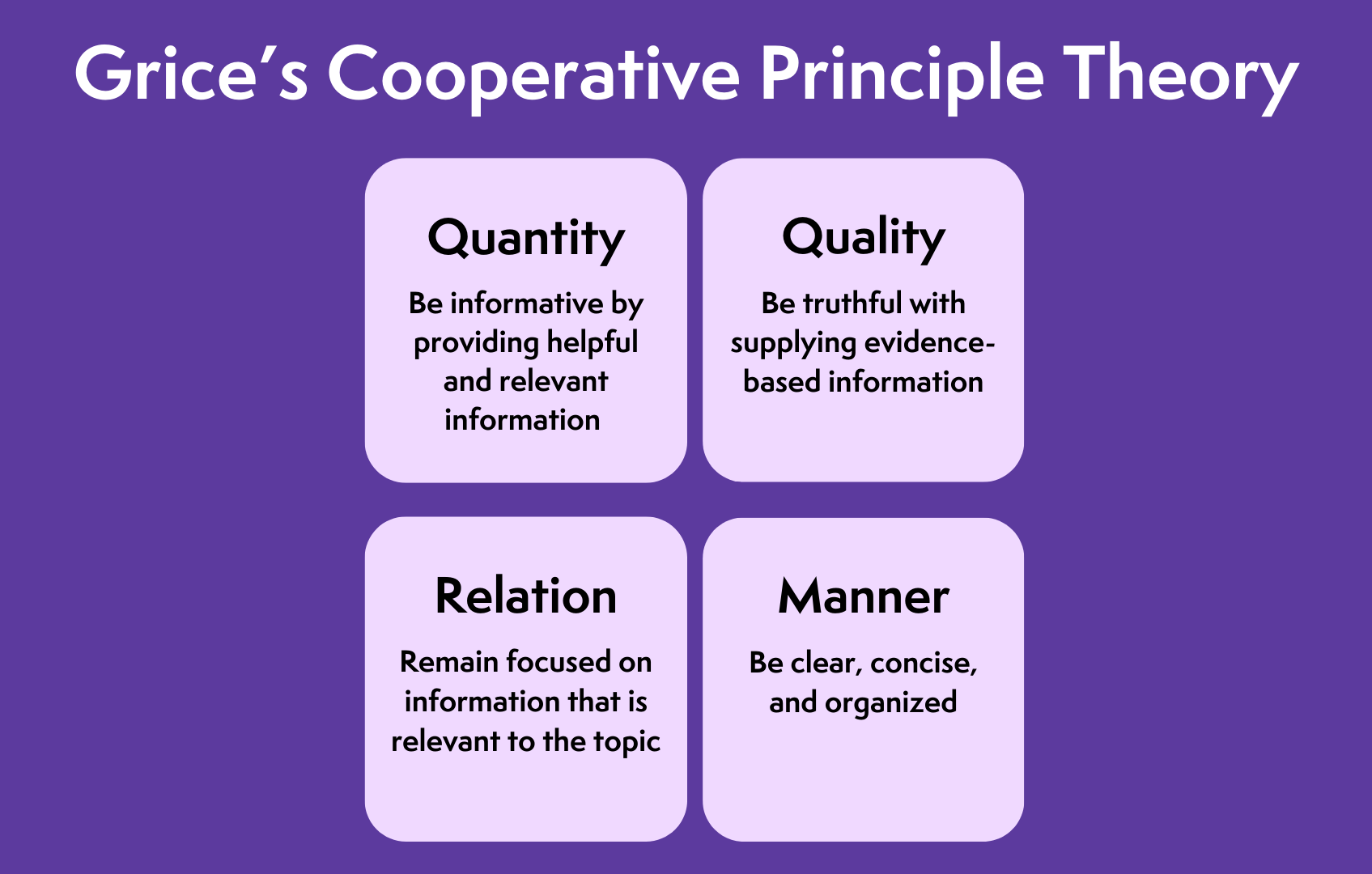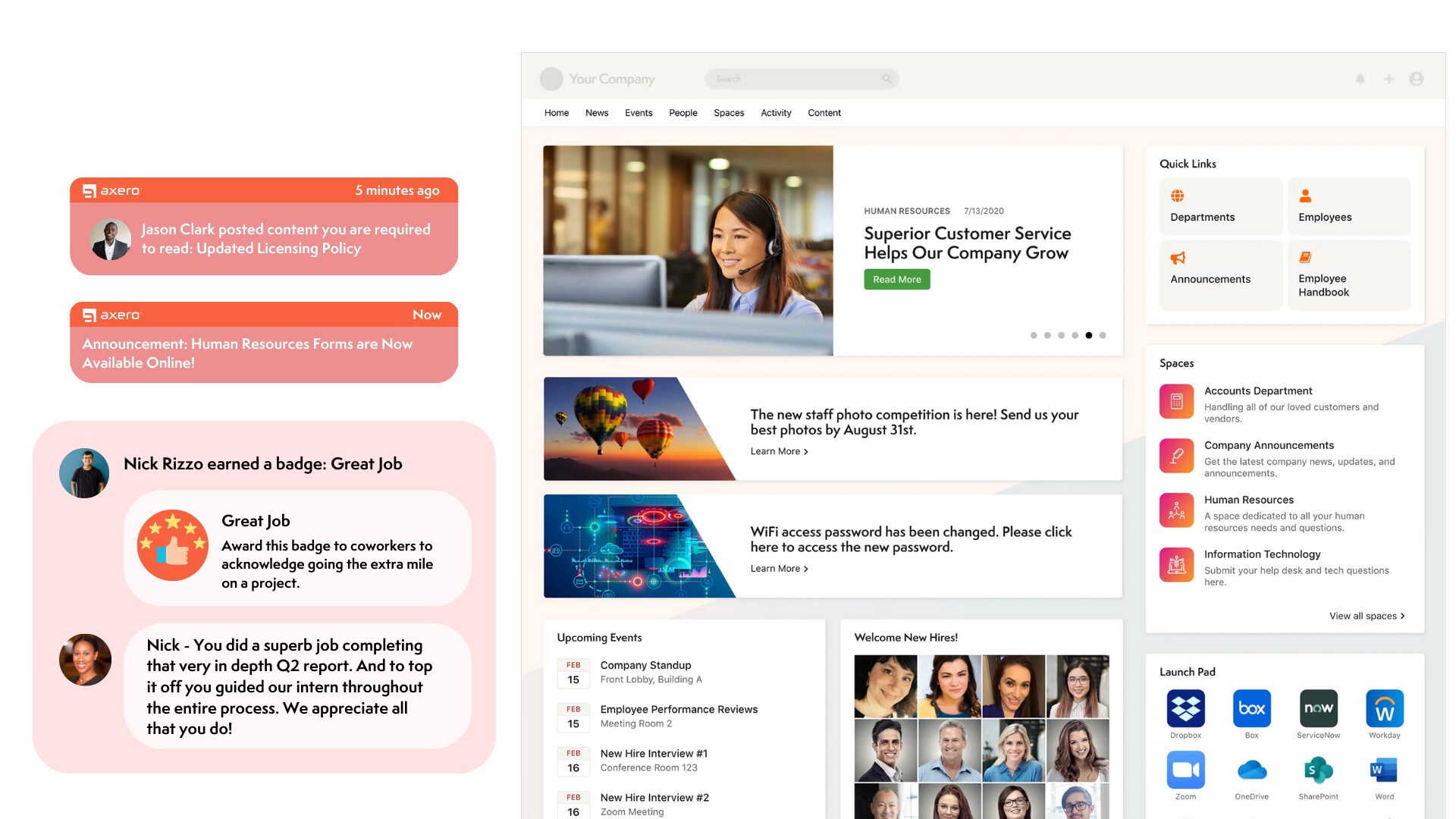Here’s the hard truth: 43% of conflicts at work stem from communication gaps. This probably won’t surprise you if you’ve been working somewhere, anywhere, long enough that you could see the cracks in how people communicate, or worse, entirely fail to do so.
What might surprise you, however, is how costly these communication gaps can be: large organizations are reported to lose $62.4 million, and smaller companies $420,000 per year. It’s clear that organizations need to start investing more in their communication process, and that communication gaps cannot be shoved under the rug.
What is a communication gap?
A communication gap is a failure or breakdown in the exchange of information, which often leads to a misunderstanding between parties as the intended message isn’t conveyed well or understood clearly.
Communication gaps exist in every part of our lives, from relationships to social interactions and even everyday activities, and can occur due to many reasons. It can be a lack of clarity when messages are vague, ambiguous, or open to multiple interpretations. It can be two (or more) people who communicate differently and assume others understand things the same way they do. (I thought you booked the restaurant! Sounds familiar?) It can be a misunderstanding about what needs to be communicated to whom.
In this article, we’re going to focus on communication gaps in the workplace, what causes them, and how they can be bridged.
What do communication gaps in the workplace look like?
Communication gaps in the workplace are all too common. However, what you need to understand is that not every communication issue qualifies as a communication “gap.” Some are simple disagreements, delays, or even a lack of interest rather than a true breakdown in understanding.
Let’s take a look at how a communication gap can manifest in different forms at work.
- A communication gap between managers and staff: A manager verbally communicates a deadline during a meeting without ensuring that staff have taken in the information correctly. A key staff member mishears the deadline date, and writes it down incorrectly. As a result, the deadline is missed, and the project derails.
- A communication gap between team members: Two team members in similar roles are working on the same project together; each one assumes that the other will complete the portion outside of their personal area of expertise. It is only when the project is well underway that they realize they have duplicated one part of the project while neglecting the other.
- A communication gap between departments: There are night shift and day shift teams in a nursing home. The day shift team assumes that the night shift team has very little responsibility overnight and becomes frustrated when necessary laundry for the morning wake-up routine isn’t ready. The night shift team feels under-appreciated because they have assisted multiple residents overnight, as well as carrying out “unseen” deep cleaning tasks.
- A communication gap between businesses: A British business has been liaising with an American business for a couple of years and has built up a rapport. While on a video conference call, one of the Brits makes a sarcastic joke intended to break the ice for the meeting. Due to cultural humor differences and the medium of communication, the joke doesn’t land and is taken as a serious comment. This leads to awkwardness, which impacts productivity for the remainder of the meeting.
While some communication gaps may seem minor and easy to rectify in the moment, the accumulative result is a snowball of inefficiency. In worse cases where disputes between employees are frequent, they can cause significant disruption to productivity and damage to the company culture.
What causes communication gaps at work?
Communication gaps don’t happen out of nowhere. People don’t suddenly decide they don’t want to talk to colleagues. We don’t step into a meeting and make an off-hand decision to sit there and not contribute. Multiple factors can all contribute to the creation of a communication gap, with some of the most common being:
Physical barriers
- Background noise, such as loud music or machinery, can make it difficult to hear.
- Distance between colleagues who sit on opposite sides of the office can hinder communication despite requiring it regularly.
- Tech problems can lead to messaging glitches, voices cutting out, and blurred facial expressions, to name a few.
Physical barriers are the most obvious obstacle on the path to satisfactory collaboration. Consider the following examples:
Language and cultural barriers
Language barriers and cultural nuances can significantly impact communication, especially in multicultural workplaces.
- Sense of humor differences between cultures can result in offense being taken when none is meant.
- Respect for authority figures such as managers and older employees may be emphasized more in one culture than another.
- Feedback styles may be conceived as truthful and direct in one culture but rude in another, or positive in one but disingenuous in another.
- Language and dialect differences can result in information being lost in translation or misunderstood, sometimes to embarrassing effect!
Eloise recently received feedback for a project. Her manager presented it as a “compliment sandwich,” in which they sandwiched the negative feedback between two pieces of praise. For Eloise, who is from France, this feels disingenuous. She finds it confusing to be told, “good job!” only to receive a list of improvement points in the next sentence. In the future, when she receives praise from her manager, she doesn’t trust that it is genuine.
Differing behavioral cues mean that even when the same language is being spoken verbally, conflicting body language may cause miscommunication. For example, dominant American cultures value direct eye contact as a signal of attention and respect. In some Asian cultures, this is considered impolite.
Interpersonal conflicts
Every unaddressed miscommunication is like rockfall at the edges of a gully. The longer it goes on, the greater the rift becomes until, in some cases, the gap is insurmountable. Interpersonal workplace conflicts are a key reason for this and can result from:
- Personality clashes when people have different values and communication styles that don’t complement each other well.
- Mistrust due to negative past experiences.
- Blame culture, including finger-pointing, gossiping, and scapegoating, where blame is attributed to another team member.
- Ego conflict when both parties are so focused on “winning” that they forget they’re on the same team.
- Jealousy as a result of real or imagined workplace favoritism.
Identifying these interpersonal roadblocks early on can prevent minor issues from escalating into major problems. In many cases, you can’t undo past communication issues. What you can do, though, is find ways to bridge communication gaps.
How to tell if your workplace has a communication problem
“That’s just the way things are here.” How often have you heard this at work, where you eventually realize is a dysfunctional work environment?
In many cases, it will be frighteningly obvious if your workplace has a poor communication strategy. However, it’s harder to identify it as a problem if communication gaps are intrinsic to your workplace culture and a certain way of communicating (or not) is the norm.
When in doubt, look for these clues:
- Productivity levels are low.
- Deadlines are being missed and/or delayed.
- There are frequent misunderstandings about project requirements.
- Information silos between teams lead to duplicated work.
- There is a general sense of confusion among employees.
- There are financial losses from wasted time and damaged client relationships.
- There is a significant increase in employee turnover.
How many apply to your organization? If even a couple of these sound familiar, there’s a good chance your workplace has a communication problem.
Of course, some of these items (such as decreased productivity) could be a result of over-communication. But in most cases, people are prone to under-communicate, assuming that others understand what they mean. This is known as the “false consensus effect.”
The detrimental impact of the communication gap on organizational procedures can lead to team members feeling disengaged, demotivated, and resentful towards each other. Before you can improve communication, you need to understand why it broke down in the first place.
How to bridge communication gaps at work
We love to measure stuff in the workplace. Sales, efficiency, the amount of milk Sally takes in her coffee—you name it. We measure so that we know where things stand and know how to implement improvements. If only we could measure the quality of conversation!
Thankfully, a smart Brit called Herbert Paul Grice came up with a formula for this in the 70s. His Grice’s Cooperative Principle theory is based on four maxims for effective communication: quantity, quality, relation, and manner. If you hit all four of these targets, you have a bull’s eye on good communication in the workplace. Here’s the lowdown:
- Quantity: Be as informative as you possibly can, give as much information as is needed, and no more.
- DON’T SAY: “We need to talk about the project soon. There are issues.”
- DO SAY: “Let’s meet Friday at 2 PM to discuss project delays. Agenda attached.”
- Quality: Try to be truthful, and don’t give information that is false or that is not supported by evidence.
- DON’T SAY: “Your work is fine, just keep improving.”
- DO SAY: “Great job on coordination, but reports need more accuracy. Let’s refine that.”
- Relation: Be relevant, and only say things that are pertinent to the discussion.
- DON’T SAY: “Speaking of deadlines, did you see the game last night?”
- DO SAY: “The client asked for an update—let’s confirm the status before responding.”
- Manner: Be as clear, as brief, and as orderly as you can in what you say, avoiding obscurity and ambiguity.
- DON’T SAY: “We should consider various options for this task, perhaps the one we mentioned before.”
- DO SAY: “Let’s use last month’s template for consistency. I’ll send it now.”
Okay, so it’s great that a framework exists for cooperative conversation. But how do you actually put it into practice and get folks in your workplace on board? Here are some practical ways that will help you bridge the communication gap in no time.
Practice active listening
The greatest barrier to effective communication is a deficiency of listening skills among employees. Without this, the health of interpersonal relationships, and by extension, the organization, will suffer.
There is only one rule for being a good talker – learn to listen.
— Christopher Morley
Active listening begins with one simple (if harsh) step: Close your mouth. Many of us are so busy thinking about the fascinating thought we wish to contribute that we forget to listen to what is being said to us. Too often, the thing we say ends up bearing little reference to the conversation topic at hand.
When we stop focusing so hard on what we want to say, our attention is freed up to focus on the thoughts being shared with us. If responses come to mind while we’re listening, we can store them at the back of our mind until a natural pause comes up in the conversation.
It’s worth noting that different people have different cadences of speaking. A natural pause for one person may be longer than for another. It’s best practice to wait a little longer than you may think is necessary to give space for the individual speaking to share the fullness of what they want to say before you jump in.
You may find that they end up sharing exactly what you were thinking.
Normalize open dialogue
One of the easiest ways to address communication issues is to normalize open dialogue.
Many communication gaps are caused by festering, unspoken resentments. What may begin as a hurtful but minor slight, such as someone’s idea being passed over in favor of another’s, is at risk of escalating into an intense interpersonal conflict. Too often, people are afraid to ask for clarification or voice opinions out of a fear of how they will be perceived.
To fix this, create a culture in which there is no such thing as a stupid question and team members are expected to openly communicate their dissatisfactions, provided they do so in a respectful and professional way, of course!
Though it may initially feel uncomfortable to deal with conflicts in a proactive manner, try to remember that doing so will reap rewards in the long term.
Utilize internal communication tools
Company-wide communication standards ensure consistency and help employees avoid misunderstandings. If one person likes to use email while another wants to send everything via a team chat, trains of thought and updates are going to get lost.
Sit does and work out what should go where. There is no issue with someone firing across a request via chat if a ticket is also correctly submitted through the proper pipeline. Create processes for organizational communication tools for employees to follow but then make sure they are enforced correctly.
Modern internal communication channels allow you to talk to one another in every manner you can imagine. Worried that someone is going to ignore your messages? You can add a “Required Reading” tag to ensure that everyone has to look it over. With the right tool at your side, everyone can get communicating properly.
Mind the (communication) gap!
Effective communication is the glue that holds teams together, aligns stakeholders, and ensures that the right problems are solved in the right way. A workforce that does not talk to one another is not one that is aligned with each other. Communication challenges can get in the way of a positive and productive workplace, leaving everyone alone in the dark.
Your workers deserve better! With a platform like Axero, they can centralize all communication in one location to ensure that nothing slips through the gap. Why stumble across multiple platforms, trying to find that last thread with a mention of a certain project, when you can easily resolve communication gaps simply by putting all communication and chatter in one place?
According to Grammarly, “Knowledge workers now spend an astounding 88% of their workweek communicating across multiple channels.” With Axero’s Intranet, you can combine multi-channel communication into one platform. Book a demo today, close the communication gap, and save millions.























 info@axerosolutions.com
info@axerosolutions.com 1-855-AXERO-55
1-855-AXERO-55


